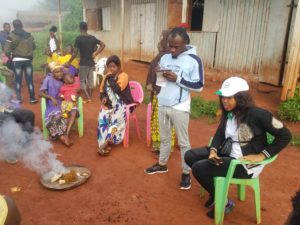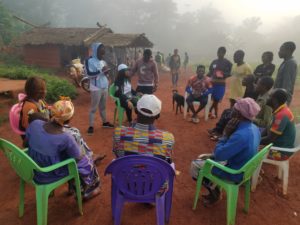Funding source: Rufford Foundation
Project Leader: Cédric DJOMO CHIMI
Biodiversity Conservation and Sustainable Management (CSM) issues are sometimes neglected in most communal forests in Cameroon despite its home to several multipurpose and threatened species (e.g., Autranella congolensis, Baillonella toxisperma, Aphanocalyx hedinii, Tieghemella Africana, and Garcinia kola), as is the case in the Doumaintang Communal Forest (DCF. These species provide meaningful livelihoods such as significant cultural values, Non-Timber Forest Products (NTFPs), and medical benefits (e.g., Baillonella toxisperma, and Garcinia kola), Edible oil (e.g., Autranella congolensis, Tieghemella Africana). They also provided timber as a raw material in several local income activities (e.g., Autranella congolensis in dugout fabrication). The DCF is neighboring to the Doumé Communal Forest (CF), and both of them share some boundaries and riparian populations. The DCF also has in common with the Doume CF, the degradation and deforestation of forest due to the intensive dependence of local communities on forest resources. This degradation and deforestation may lead to habitat reduction and target species extinction, which are also distributed in the DCF.
Therefore, changing local communities’ behavior towards CSM becomes urgent for a broad impact in the study area as these two communal forests share some boundaries and riparian populations. Each target species’ ecology and distribution knowledge are essential for reforestation and encourage conservation measures and their inherent agro-ecosystem services. To prevent genetic erosion, appropriate strategies should be developed to promote its conservation and sustainable management. Therefore, to increase the multipurpose trees species population and adequate strategy for conservation and sustainable management, there is an urgent need to identify critical environmental factors that determine their availability and population dependence level.
This project aims to improve the ecology of 5 targets threatened species (i.e., Autranella congolensis, Baillonella toxisperma, Aphanolcayx hedinii, Tieghemella Africana, and Garcinia kola) and propose best practices for their Conservation and Sustainable Management (CSM). Based on target species goods and services and associated management practices used by local communities’, this project’s expected to change bad behavior and promote local communities’ good behavior toward species CSM



